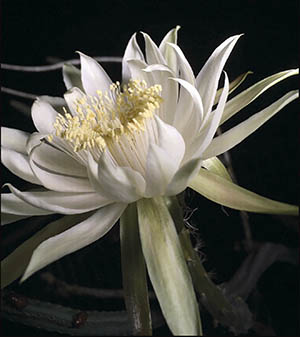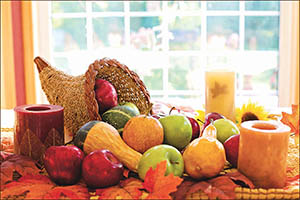The night-blooming cereus has a fascinating blossoming process.
By Summer Summers
I have to admit to a love affair with a large, ugly, sprawling cactus that most people would refuse to have in their homes. And I understand completely.
The night-blooming cereus is an Epiphyllum oxypetalum, also called Dutchman’s Pipe. Plants should have morning sun or dappled shade during the summer. Well-draining potting mix is advised and not too much water. When plants reach blooming age, they prefer being root-bound.
I have two large, unwieldy potted plants that must winter by a window. I love the unconventional growth habit and pure wildness of its shape (or lack thereof). It’s not for everyone, but it has been worth every effort as I sit with my camera at hand anticipating the 12 hours of sheer magic and beauty about to begin.
A mature plant (3 to 5 years old) begins a 7 to 10-day process sometime in late August or September. A tiny bud on the edge of a leaf grows into a 6-inch long tube that culminates in a large bud. After several nights of checking and anticipation, the large flower bud begins to shiver, almost seeming to breathe, and then slowly … rapidly … a pure white blossom of delicate thin petals unfurls as I sit and watch. The entire process takes about 10 minutes and most of the excitement is over within the hour. The flower will bloom for 5 or 6 hours and then slowly begin to fade. By morning there is nothing, but a limp spent bloom. That certainly is a lot of work (and love) for 10 minutes or even 1 hour.
And I wouldn’t change it for the world.
Master Gardener, Summer Summers, volunteers with GC Master Gardeners of the UofA Div. of Agriculture, Cooperative Ext. Service. Master Gardeners pool skills and resources to improve home horticulture, stimulate interest in plants and gardening, and encourage beautification. For more info, 501-623-6841 or adykes@uaex.edu.









